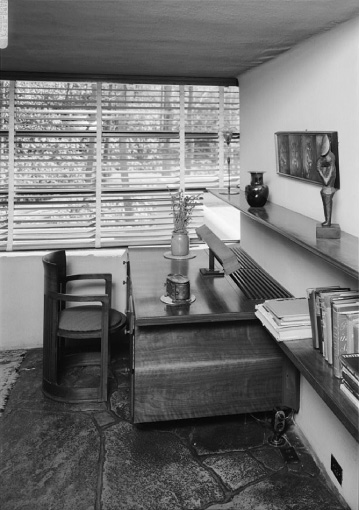Roots
“The part of a thing attaching it to a greater more fundamental whole; the end or base”
On our trip to Fallingwater and Monticello we visited the buildings that influence the designs that we create today. Monticello, built by Thomas Jefferson, was one of the first to experiment with double paned windows, skylights, and the addition of more detail into common household items. Because of the time period in which Monticello was being built and redesigned experimenting with natural lighting was almost a necessity. The only artificial lighting that they had available was candles or oil lights.
On our trip to Fallingwater and Monticello we visited the buildings that influence the designs that we create today. Monticello, built by Thomas Jefferson, was one of the first to experiment with double paned windows, skylights, and the addition of more detail into common household items. Because of the time period in which Monticello was being built and redesigned experimenting with natural lighting was almost a necessity. The only artificial lighting that they had available was candles or oil lights.

(Image taken from http://www.period-homes.com/article/IMAGES/skylight3.gif)
 (Image taken from http://www.oldhousejournal.com/magazine/2004/june/images/bedroom.jpg)
(Image taken from http://www.oldhousejournal.com/magazine/2004/june/images/bedroom.jpg)At Fallingwater Frank Lloyd Wright decided to create a fully furnished home. He, along with Thomas Jefferson, built some of the their furniture into the house. At Fallingwater all the inhabitants had to bring were clothes and food. From these changes and innovations made in the past our design culture now has progressed, and will continue to progress into something more functional and pleasing.
(Image taken from http://www.wright-house.com/frank-lloyd-wright/fallingwater-pictures/photos-medium/BW-guest-bedroom-desk-fallingwater-m.jpg)
Congruence
“In agreement or harmony”
In any design we must consider the environment in which the item is to be located. When considering this we have to understand how our design manipulates it's surrounding space. It has to work in congruence with it’s surroundings, whether it's surroundings are other buildings, nature, or pieces of artwork.
For my History project i chose The Whitney Museum of American Art. I chose this building because of it's incongruence with its neighboring buildings. The Whitney Museum is so unlike it's surroundings that it stands out drastically. The only feature that it has in common with some of its surrounding buildings is the materials that it's made out of. 
Compression: Release

"an abstract idea"
All of the buildings we've studied this year came from some sort of inspiration. At Monticello, Thomas Jefferson made innovations for functionality by adding more light, and doubled paned windows in part of the house. At Falling Water, Frank Lloyd Wright made innovations for functionality and aesthetics by building furniture into the house, and creating such a comfortable, but still very abstract, structure.
There is always some source of inspiration, we start out with that inspiration and then develop a concept or design and progress from there into a well developed final product.
Materiality
"the quality or character of being material, or composed of matter."
Design is the art of manipulating matter in an a way that is aesthetically pleasing. Different materials affect their surroundings in different ways. When first coming up with a concept for a project you have to look at the space it will be around or in and then choose a material to use. This material will give you limitations, and from there you can progress into manipulating the material into something interesting.
Fallingwater and Monticello were built from surrounding materials, and therefore accentuate their landscapes extremely well. The stone used in Fallingwater for the floors and exterior is the stone you see under the waterfall, and all the colors that Frank Lloyd Wright used were very organic so that, while still being an absolute treasure, the house fades to a certain extent into the backdrop of forest. Monticello, on the other hand, stands out from its surroundings very dramatically. It changes the feeling of the land into something more upscale and refined.
Compression: Release

No comments:
Post a Comment